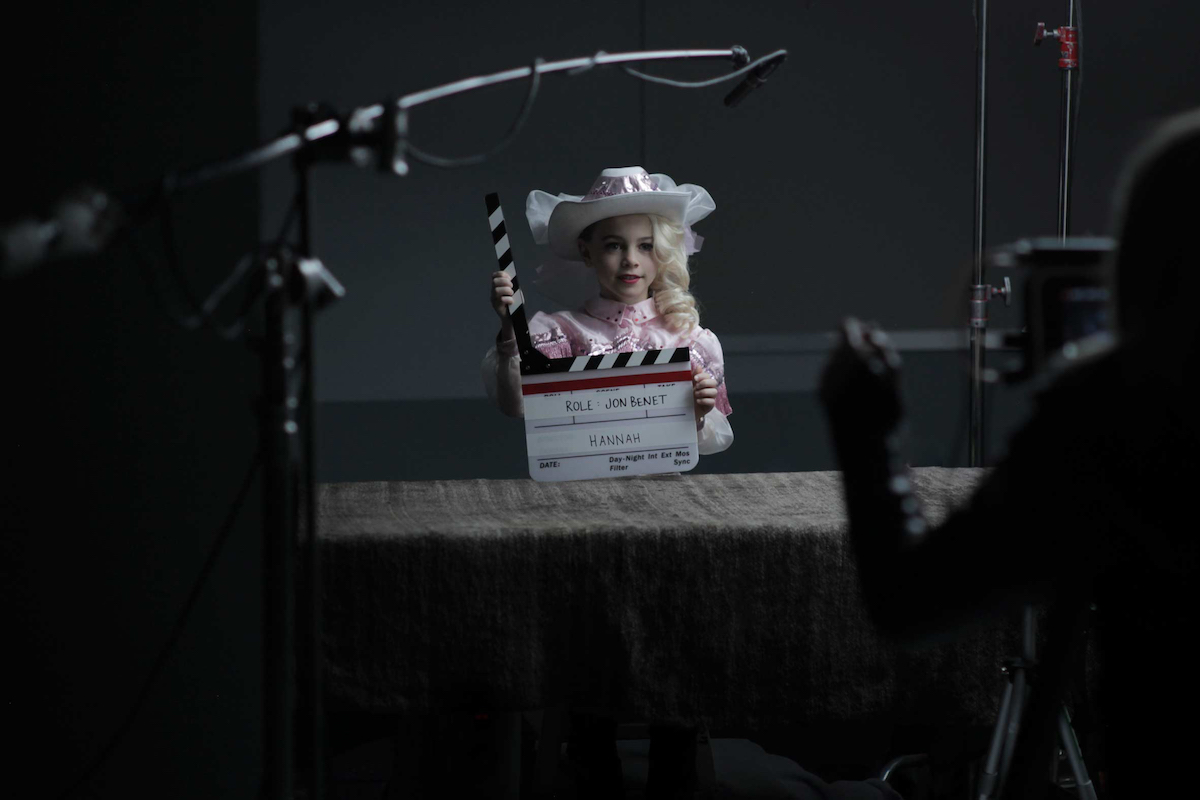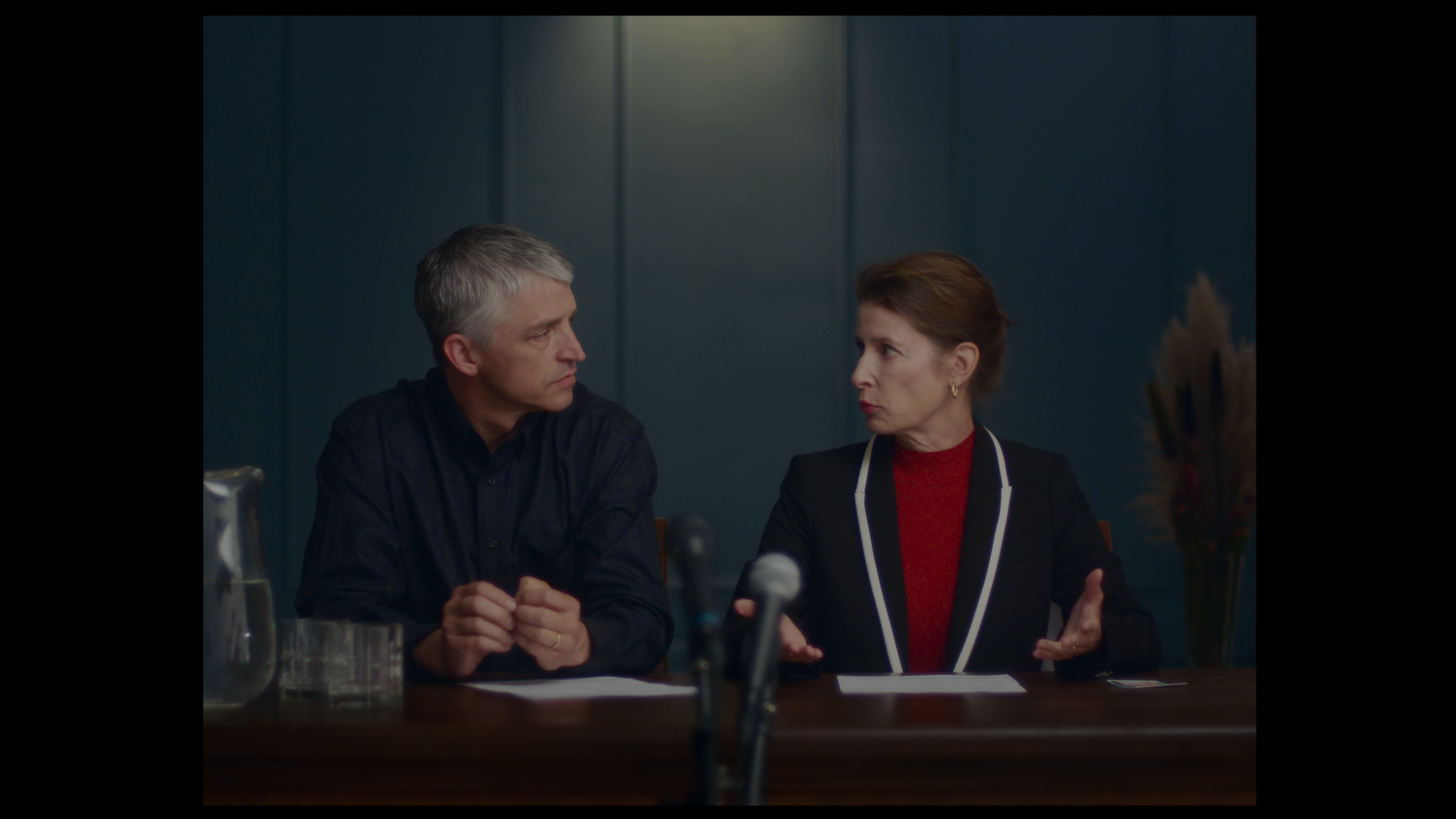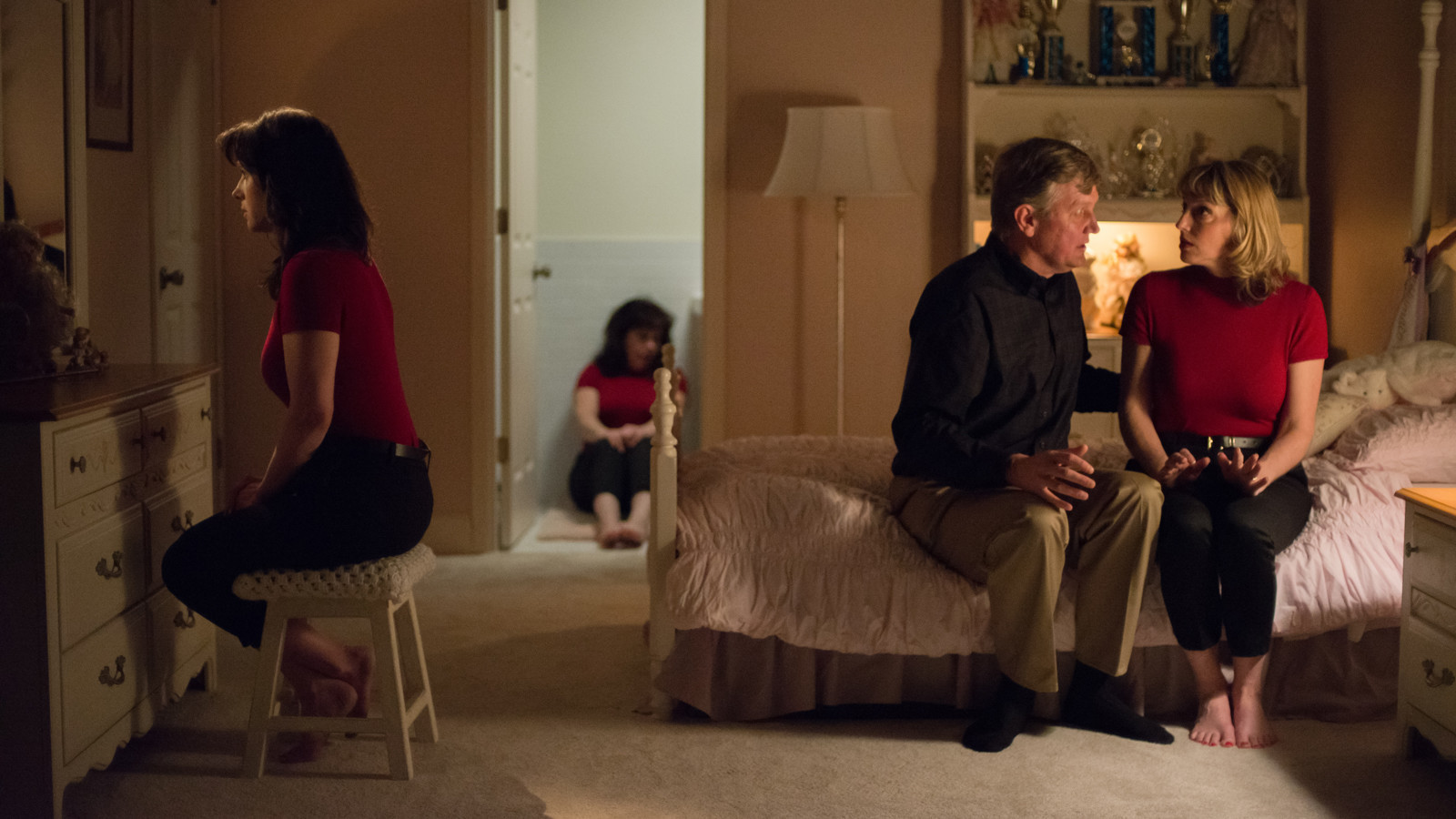In Casting JonBenet, we revisit a true-crime mystery that captivated the U.S. But we do so obliquely: director Kitty Green is as interested, more interested, in the stories we tell about the stories we tell than anything so mundane as solving a case. The result is a Russian nesting doll of provocation and artful images, and it winds up just this side of inappropriate.
While many very good linear, mid-shot talking-head documentaries continue to be produced, the ground has been shifting for a while. If those conventional efforts come across increasingly staid, it’s at least in part because of the risks other documentarians have taken with their films, bending “fact” (always in scare quotes) and narrative approach to suit the material in exciting, challenging, or dangerous ways. Casting JonBenet finds itself in this tradition: it walks a fine line between engrossing and exploitative, but it’s certainly never boring.

The still-unsolved murder of 6-year-old JonBenet Ramsey — on December 25th or 26th, 1996 in Boulder, CO — began as a horrific tragedy before rapidly spiraling into outright tawdry spectacle. Captivated audiences across the country watched as her parents John and Patsy detailed the events in a press conference and followed along as the investigation proceeded. There was overwhelming sympathy and a sense of shared grief.
And then some troubling questions began to arise. Why were the parents so impassive in public? Who takes the time to write a three-page ransom letter — on the Ramsey’s stationary, with their pen, demanding the exact amount of John’s Christmas bonus ($118,000 — not “1 million” or “500,000.” $118,000, exactly) — and then leaves the body in the basement after all? Why didn’t the police secure the crime scene, and why were so many leads unfollowed?
Stories began to circulate about the family, and about an alleged “dark corner of Boulder” enmeshed in child molestation rings. JonBenet’s involvement in beauty pageants — the inherently creepy act of sexualizing young children — certainly didn’t make things any less murky or gross. A confession from a known sexual predator, later revealed to be false, complicated things further. At one point, even a local mall-store Santa was a suspect. Somehow, JonBenet herself was both lost in all this speculation and fragmented, as the theories created any number of scenarios for armchair sleuths with a taste for the morbid.

One of the strengths of Casting JonBenet is that it literalizes this fragmentation. We don’t see a single second of archival footage or photography, or hear from anyone involved with the case (except from restagings). Instead, Green presents a cross-section of Boulder residents trying out for parts in the retelling. It’s a kaleidoscope of takes both hot and more considered, drawing on their own experiences as actors trying to get into the roles. We’re left to consider the relation between fact and fiction, and the psychologies at play when we pretend to be things we’re not.
The danger of exploitation should be obvious. As people tell their own stories that allow them access to the “characters”, there’s a queasiness about the whole affair. (Not least of which being: how much did these actors know about the project in which they’re featured? It’s never clear.) Pushing things even further, Green allows them to reveal some pretty intimate moments of their own lives, while juxtaposing the telling with a graceful, often beautifully-shot formalism.
Casting JonBenet is strong, unsettling stuff. It trips up at moments: what I’ll call “the watermelon scene” is almost certainly the one likeliest to draw offense, but more generally the film runs the risk of turning its subjects into rube archetypes. At the same time, its emphasis on artifice and the craft of acting, even for these would-be actors, is revealing. Several fascinating sequences, jump-cutting between alternate takes of line-readings, make clear that our representations of events depend heavily on what we believed about them in the first place.
The film’s Godardian finale — shot on a visibly evident soundstage, with a tracking shot following another camera shooting a tracking shot — is astounding. All of the stories we’ve heard and theories we’ve considered occupy the frame simultaneously. It’s mesmerizing and deeply uncomfortable.

Given the self-reflexive nature of Casting JonBenet, much is left unexamined. This is not a film that will grapple with larger socio-cultural concerns, for instance, like why the murder of one white child draws a fascination and outrage that the murders of many more non-white children do. (Though, closing to the strains of “There She Is, Miss America”, perhaps we do get one clue on that score: “And there she is / Walking on air, she is / Fairest of the fair, she is…”) And it’s not going to dive deep into our enduring desire to tease out narrative strands and demand their resolution, since its logic insists on their never being resolved.
But those complaints amount to demanding Casting JonBenet simply be a different film. As it is, Green has constructed a maddening, disturbing puzzle box about the ways we think about what we think. It’s not an easy watch, but it’s a rewarding one.

